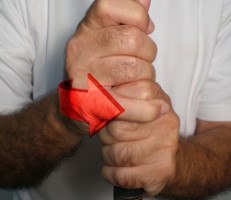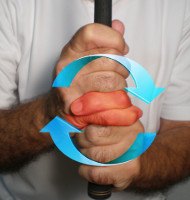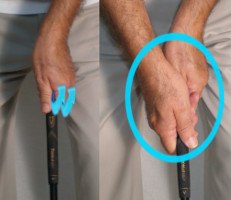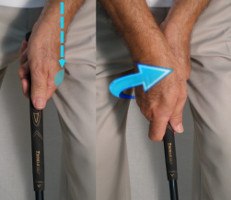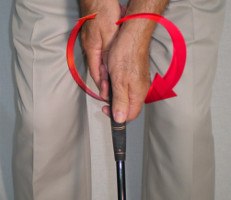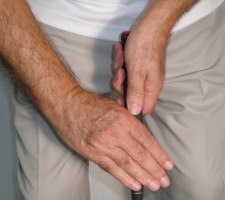|
Pros and Cons of Every Golf Grip Style |
Best Grip? Overlapping vs Interlocking |
Grip style: Vardon (overlapping)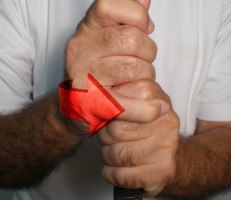 |
Hand position: Neutral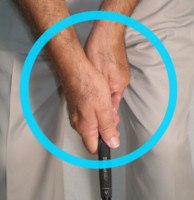 |
Putting grip style / hand position: Reverse overlap / neutral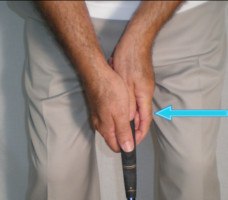 |

American golf fans may be unfamiliar with this young Brit, but Tommy Fleetwood’s grip on a great future – like his grip on the golf club – appears quite secure.
Fleetwood turned pro in 2010 following an outstanding amateur career, winning a Challenge Tour event in his second season and claiming his first European Tour title in 2013. He’s a wiry lad at 5’11”, 170 pounds, but he’s plenty long and deadly accurate. In 2014, Fleetwood ranked among Europe’s top 40 for both driving distance and fairway percentage, and finished 12th for greens in regulation.
Fleetwood’s fluid swing is based on a solid, simple grip. Left hand: Nice and neutral, the “V” between thumb and forefinger pointing to his chest. Right hand: Matching the left, with the “V” aimed a tad right (as opposed to aligning directly with the shaft).
While he’s not quite as proficient with the putter, Tommy Fleetwood’s grip is just as sound. He holds the handle every so lightly with his large hands, gently laying the left index finger across his right ring finger to form a classic reverse overlap. Like nearly every high-level player, Fleetwood exhibits little or no tension in his arms when putting.
An overly firm grip can prove fatal not only in pressure-packed situations, but under the most informal circumstances. If you struggle within five feet of the cup or have a hard time controlling your speed on the greens, check your grip pressure. Here’s a great drill to help you find the pressure that produces your best results:
Update:
Tommy Fleetwood, an English professional golfer, utilizes a grip known as the overlapping grip, also referred to as the Vardon grip. The overlapping grip is a widely used grip style among golfers, including professionals.
To achieve the overlapping grip similar to Tommy Fleetwood's, follow these steps:
- Place your left hand on the golf club first (for right-handed golfers). Position the grip diagonally across the base of your fingers, with the club running across the top joint of your index finger and resting against the bottom part of your heel pad.
- Wrap your left hand around the grip, creating a firm but comfortable hold. The club should rest more in the fingers of your left hand rather than in the palm.
- With your left hand in position, take your right hand and position it below your left hand on the club grip. The pinky finger of your right hand should rest on top of the gap between your left index and middle fingers.
- Wrap your right hand around the club grip, making sure the base of your right thumb sits snugly against the left hand's lifeline. The V formed by your thumb and index finger should point toward your right shoulder.
- Both thumbs should be positioned more toward the right side of the grip, creating a slight overlap between the hands. The grip pressure should be firm but not overly tight, allowing for freedom of movement during the swing.
Remember that grip preferences can vary among golfers, and it's important to find a grip style that feels comfortable and suits your swing characteristics.
If you're looking to refine your grip or make any adjustments, it's advisable to work with a golf instructor or coach. They can provide personalized guidance and make any necessary tweaks to optimize your grip and overall performance on the course.
